#queen caroline of bavaria
Note
Hi!
If you don’t mind me asking, which parent do you think Sisi and each of her siblings looked more like?
I think Helene looked like Max, Sisi, Maria Sophie, Mathilde and Sophie Charlotte looked like Ludovika and Karl Theodor, Ludwig Wilhelm anc Maximilian Emmanuel looked like a mix of their parents.
Hi! No I don't mind at all, I like this type of questions since I usually don't talk much about these kind of things.
Personally I agree on you with Elisabeth and Mathilde, they both looked a lot like their mom:
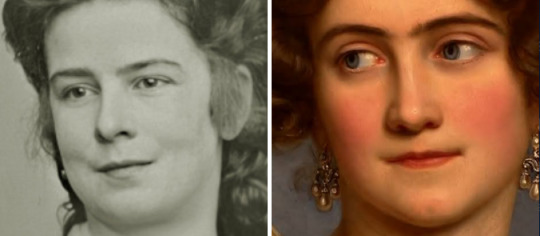
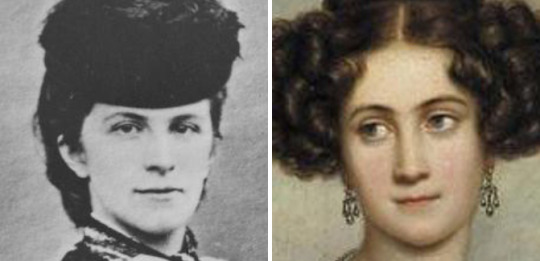
To me Marie resembled a bit more to her dad, specially the shape of her face (notice how they both had the same parted chin)
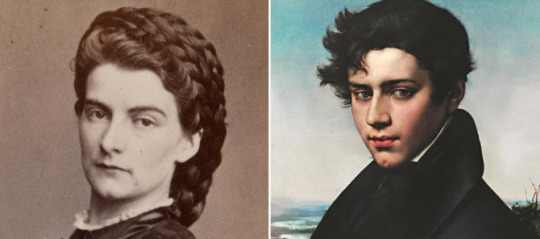
I don't think Sophie resembled particularly to one of her parents, tho as an older woman I think she looked a lot like her grandmother Queen Caroline.
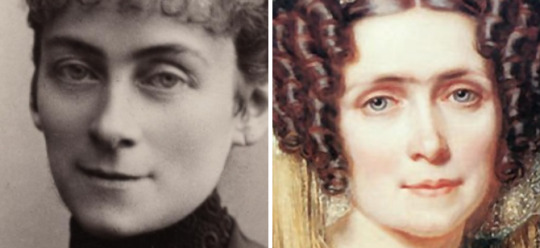
With Helene I can't settle, to be honest. Here is a comparison with her parents' portraits. Maybe she also looked more like a grandparent?

As for the guys: I also think they looked like a mix of their parents, tho as he grew older Ludwig Wilhelm resembled more to his dad.



In general you can see the family resemblance (remember Ludovika and Max were cousins lol) in all the kids, tho I wish we had more portraits, or better, actual pictures of their parents in their youth to compare them better.
#i tried to use different pics of max and ludovika but at the end i gave up jhjhjgk#asks#ludovika of bavaria duchess in bavaria#empress elisabeth of austria#queen marie sophie of the two sicilies#mathilde in bavaria countess of trani#sophie in bavaria duchesse d'aleçon#helene in bavaria hereditary princess of thurn und taxis#duke maximilian emanuel in bavaria#duke ludwig wilhelm in bavaria#karl theodor duke in bavaria#queen caroline of bavaria#maximilian joseph duke in bavaria
7 notes
·
View notes
Text
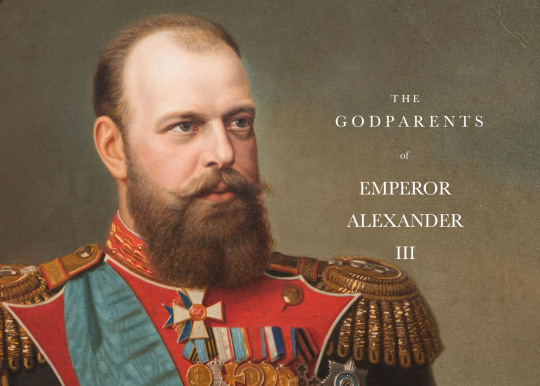

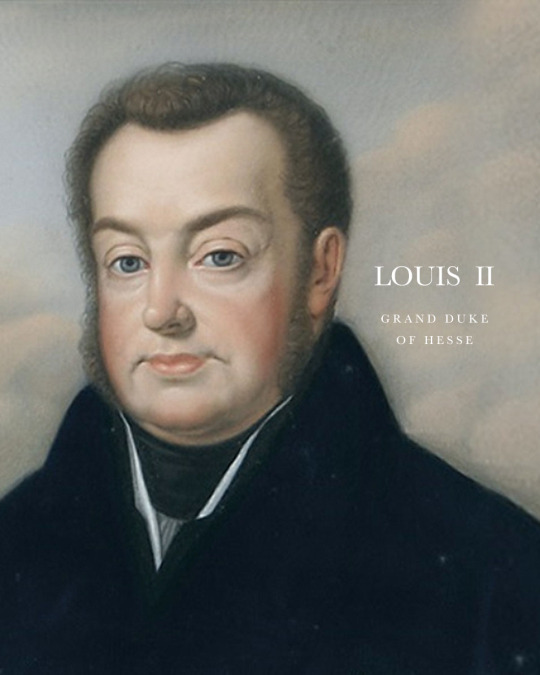

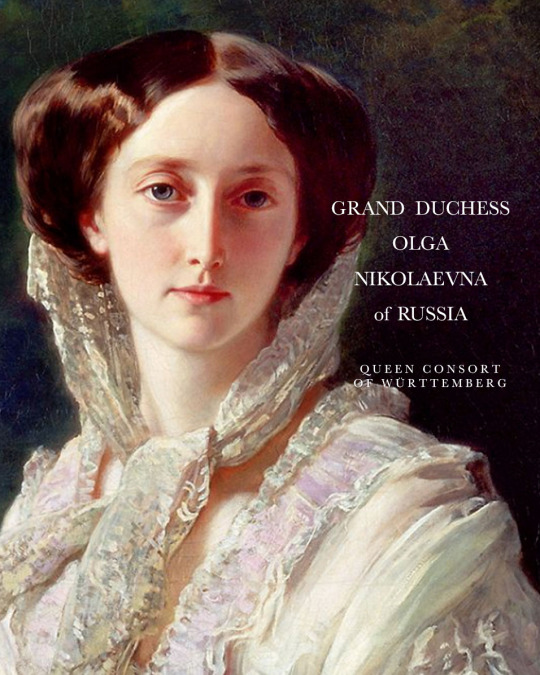
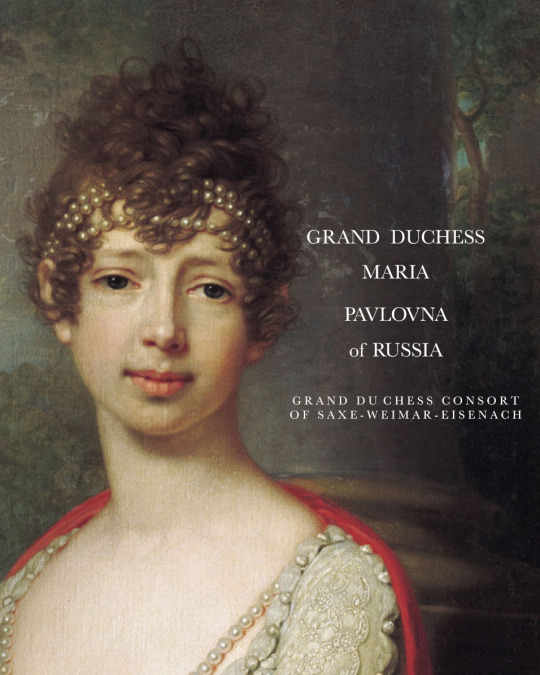

GODPARENTS OF EMPEROR ALEXANDER III
Emperor Alexander III (then Grand Duke) was born as the second son of Emperor Alexander II (then Tsesarevich) on 10 March 1845, during the reign of his grandfather Emperor Nicholas I. He was christened a week later at 10 am in the Winter Palace Church, St. Petersburg, by the Confessor of Their Imperial Highnesses. He had six listed godparents:
NICHOLAS I, EMPEROR OF RUSSIA - his paternal grandfather was one of his godparents present at his christening. Mainly remembered in history as a reactionary whose controversial reign was marked by geographical expansion, centralisation of administrative policies and repression of dissent. He died in 1855, when the Alexander was only 9 years-old, just a week shy from his 10th birthday.
LOUIS II, GRAND DUKE OF HESSE AND BY RHINE - his maternal grandfather was another of his godparents, but was absent at the christening. The hessian grand duke, like his paternal grandfather, was also considered a reactionary leader, he was in conflict with parliament almost his entire reign. The German revolution in 1848-49 proved his inability to govern. On March 5, 1848 he named his son Louis III as co-regent, and a year later he died.
GRAND DUCHESS ELENA PAVLOVNA OF RUSSIA - his great-aunt, the wife of Grand Duke Michael Pavlovich, stood as one of his godparents. Born as Princess Charlotte of Württemberg, she became a close friend of Alexander's mother the Empress Maria Alexandrovna, and was known as an intellectual. She was also considered the most exceptional woman in the imperial family since Catherine the Great.
GRAND DUCHESS OLGA NIKOLAEVNA OF RUSSIA, QUEEN CONSORT OF WÜRTTEMBERG - his aunt was one of his godparents present at the christening. She was the younger sister of his father. Attractive, cultured and intelligent, she was considered to be one of the most eligible princesses in Europe. Just three years after her nephew was born, in 1846, she married Crown Prince Karl of Württemberg. Alexander's older brother the heir apparent Nicholas died just two months before their aunt Queen consort of Württemberg. With his death, he became the next heir apparent, the 'Tsesarevich'.
GRAND DUCHESS MARIA PAVLOVNA OF RUSSIA, GRAND DUCHESS CONSORT OF SAXE-WEIMAR-EISENACH - his great-aunt was another of his godparents. One of the daughters of Emperor Paul I, the grand duchess married a German prince Karl Friedrich, Grand Duke of Saxe-Weimar-Eisenach in 1804. She was an intellect, interested in both arts and sciences. German poet and novelist Johann Wolfgang von Goethe hailed her as one of the worthiest women of his time. She was the great-grandmother of Wilhelm II, German Emperor and Queen Victoria of Sweden.
PRINCESS MATHILDE CAROLINE OF BAVARIA, GRAND DUCHESS OF HESSE AND BY RHINE - his aunt, the wife of his uncle Louis III, Grand Duke of Hesse and by Rhine, was listed as one of the future emperor's godparents. She was the eldest daughter of King Ludwig I of Bavaria. Her marriage to Louis III was childless. She died of cancer in 1862 at the age of 48.
Source
32 notes
·
View notes
Photo

Amalie Auguste of Bavaria, Queen of Saxony, early 1800s.
Amalie Auguste (13 November 1801, in Munich – 8 November 1877, in Dresden) was a Bavarian princess by birth and Queen of Saxony by marriage to King John of Saxony. Amalie was the fourth child of King Maximilian I Joseph of Bavaria and his second wife Caroline of Baden. She was the identical twin sister of Elisabeth Louise, later Queen of Prussia as wife of Frederick William IV of Prussia. Three other sisters married King Frederick Augustus II of Saxony, Archduke Franz Karl of Austria and Maximilian Joseph, Duke in Bavaria.
#Amalie Auguste#Amalie Auguste of Bavaria#twin#twin sisters#female portrait#female#portrait#classical art#fine arts#woman#princess#queen#nobility#noble#aristocrat#western civilization#europe#european#europa#world history
58 notes
·
View notes
Photo
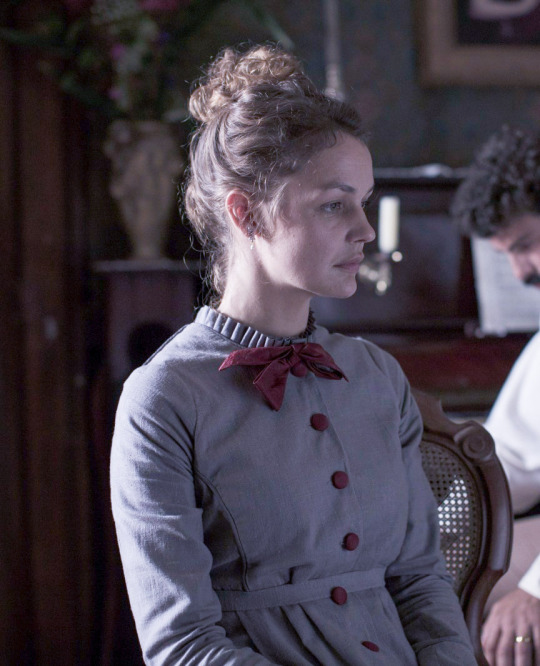

Luise Heyer as Maria Leopoldina of Austria, the Empress Consort of Brazil, Queen Consort of Portugal and Archduchess of Austria
Dona Maria Leopoldina of Austria (22 January 1797 – 11 December 1826) was born Caroline Josepha Leopoldine Franziska Ferdinanda of Habsburg-Lorraine in Vienna, Austria, Holy Roman Empire. She was the daughter of Holy Roman Emperor Franz II and Empress Maria Theresa of Naples and Sicily. In 1817 the Archduchess married Prince Dom Pedro of Braganza (12 October 1798 – 24 September 1834), heir to Portugal, later the Emperor Dom Pedro I of Brazil and King Dom Pedro IV of Portugal. The couple had 7 children: Queen Maria II of Portugal, Miguel, Prince of Beira, João Carlos, Prince of Beira, Princess Januária of Brazil, Princess Paula of Brazil, Princess Francisca of Brazil and Emperor Dom Pedro II of Brazil. On September 2, 1822 while she was the Acting Princess Regent of the Kingdom of Brazil in the absence of her husband Maria Leopoldina signed the Decree of Independence, declaring Brazil separate from Portugal. She died at age 29 in 1826 after a miscarriage. As Acting Regent Maria Leopoldina was the first woman to govern an independent Brazil, the first empress consort of the country, the first empress of the Americas and the first woman to govern an independent American country.
Victoria Guerra as Amélia of Leuchtenberg, the Empress Consort of Brazil and Duchess of Braganza
Dona Amélia of Leuchtenberg (31 July 1812 – 26 January 1873) was born Amélie Auguste Eugénie Napoléonne de Leuchtenberg in Milan, Kingdom of Italy. She was the daughter of Eugène de Beauharnais, Duke of Leuchtenberg and Princess Augusta of Bavaria, Duchess of Leuchtenberg. She was the second wife of Emperor Dom Pedro I of Brazil after their marriage in 1829 and they had one child, the Princess Maria Amélia of Brazil. After Dom Pedro I abdicated the Brazilian crown, Amélia accompanied her husband back to Europe. They held the titles of Duke and Duchess of Braganza until Pedro’s dead in 1834. Amélia died in Lisbon at the age of 60 in 1873.
A VIAGEM DE PEDRO | PEDRO, BETWEEN THE DEVIL AND THE DEEP BLUE SEA (2021). Dir. Laís Bodanzky
#a viagem de pedro#perioddramaedit#filmedit#movieedit#weloveperioddrama#worldcinemaedit#perioddramasource#onlyperioddramas#historicwomendaily#periodedits#braziliansource#cinematv#cinemapix#fyeahmovies#motionpicturesource#filmtv#filmtvdaily#userperioddrama#femaledaily#femalecharacters#flawlessbeautyqueens#historyedit#women in history#period drama#pedro between the devil and the deep blue sea#brazilian cinema#brazilian movies#mine#mine: edit#brazilian stuff
73 notes
·
View notes
Photo


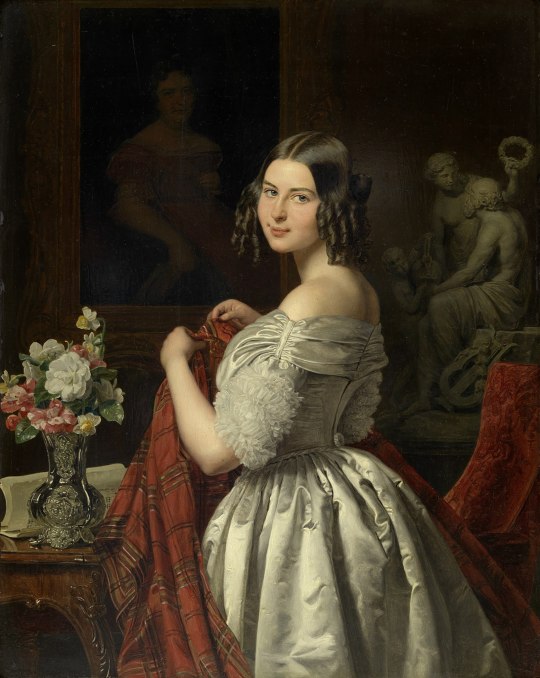
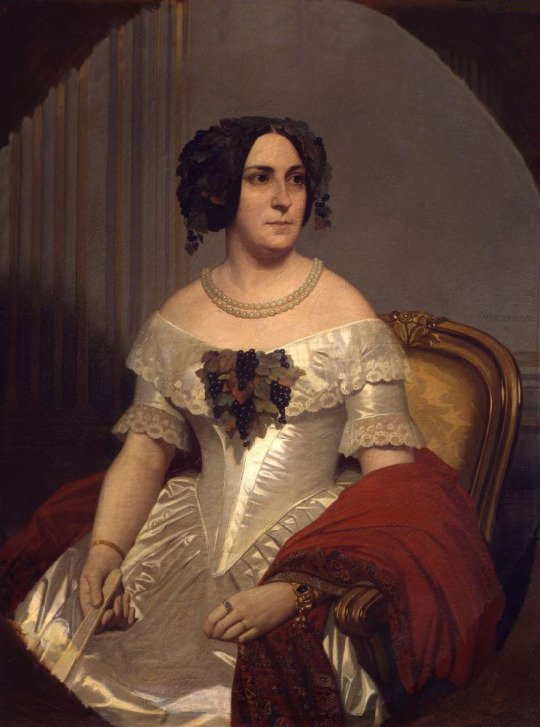



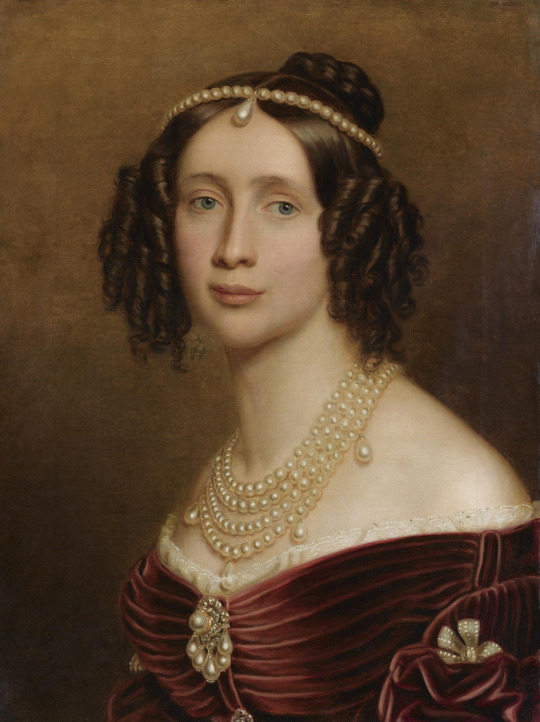
Pre-crinoline Victorian dresses (from top to bottom) -
1837 Maria Louise Alexandrine von Preußen geb. Prinzessin von Sachsen-Weimar-Eisenach by Carl Joseph Begas (Klassik Stiftung Weimar, specific location ?). From Wikimedia 1311X1542.
ca. 1840 Lady Flora Hastings possibly by Edward Finden after E. Hawkins; portrait from the book Hastings of Hastings. From Wikimedia, attributions from British Museum Web site 2275X2263.
1840 Junge Dame bei der Toilette by Ferdinand Georg Waldmüller (Wien Museum or Museen der Stadt Wien, specific location ? - Wien, Austria). From Wikimedia 1632X2048.
1842 Marquise Louis-Frédéric Foucher de Circé, née Marie-Marguerite Burthe by Amaury Duval (Musée Sainte-Croix - Poitiers, Vienne, Nouvelle-Aquitaine, France). From Wikimedia; fixed spots, creases, & flaws w Pshop 743X1000.
Marie Karoline Austria Teschen by Robert Theer (auctioned by Christie's) From the lost gallery's photostream on flickr; fixed spots w Pshop 1884X2312.
Unknown woman by Sergey Zaryanko (Tyumen Regional Museum of Fine Arts - Tyumen, Tyumen Oblast, Russia). From theebonswan.blogspot.com/2018/12/portrait-of-unknown-woman-1840s-sergey.html?view=magazine 781X999.
Probably Lady Adelaide Emelina Caroline Vane by Sir Francis Grant (auctioned by Christie's). From their Web site 1196X1574.
1842 Maria Anna of Bavaria, Queen of Saxony by Joseph Karl Stieler (location ?) From the lost gallery; fixed spots & flaws w Pshop 1459X1951.
#1830s fashion#1840s fashion#early Victorian fashion#Romantic era fashion#Biedermeier fashion#Maria Louise Alexandrine von Preußen#Carl Joseph Begas#straight hair#side curl coiffure#modesty piece#pleated bertha#quarter-length sleeves#darts#full skirt#Flora Hastings#Edward Finden#E. Hawkins#bateau neckline#imbecile sleeves#natural waistline#waist band#Ferdinand Georg Waldmüller#ruffled sleeves#Marie-Marguerite Burthe#Amaury Duval#lace trim#V waistline#Marie Karoline Austria Teschen#Robert Theer#wavy hair
29 notes
·
View notes
Text
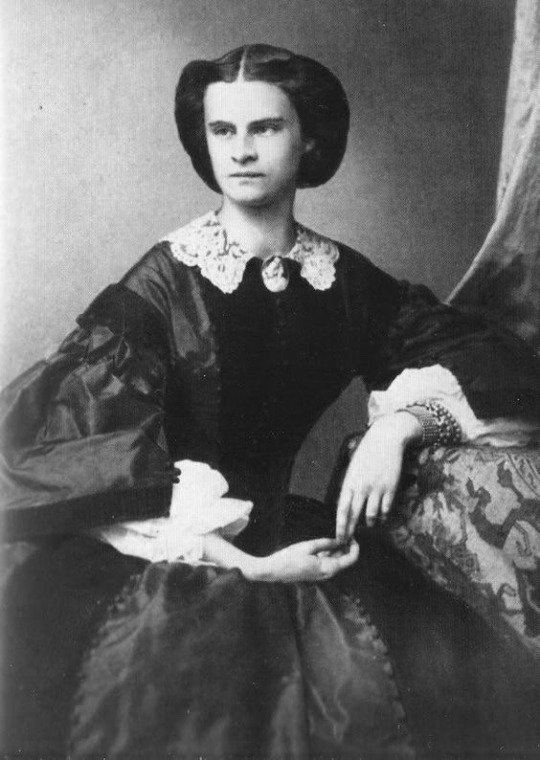
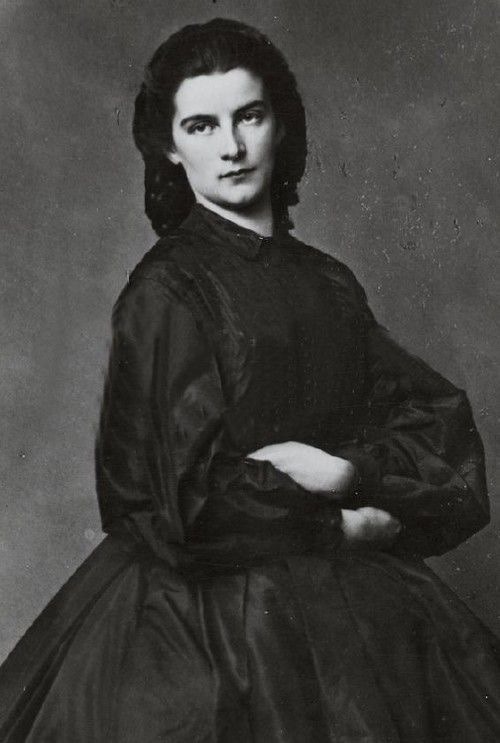
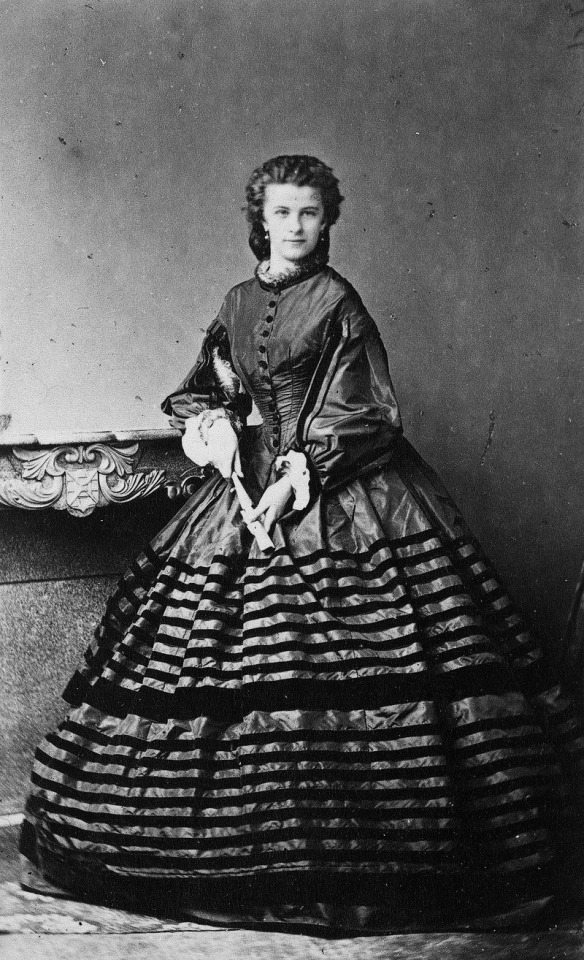

The four sisters of Elisabeth (left to right) :
Helene Caroline Therese, Duchess in Bavaria then Hereditary Princess of Thurn and Taxis. (1834-1890)
Marie Sophie Amélie, Duchess in Bavaria, Duchess of Calabre then Queen Consort of the Two-Sicilies. (1841-1925)
Mathilde Ludovika, Countess of Trani. (1843-1925)
Sophie Charlotte Auguste, Duchess in Bavaria then Duchess of Alençon. (1847-1897)
#Marie-Sophie in Bavaria#Helene in Bavaria#Mathilde in Bavaria#Sophie-Charlotte in Bavaria#old photographs#portraits#sisters#sisterhood
3 notes
·
View notes
Text
The Family <3




emperor Franz Joseph Of Austria And King Of Hungary (1816-1905)
age: 35
height: 6’4
birthday: 18th august
early life:
Franz Joseph was born on 18 August 1816 in the Schönbrunn Palace in Vienna (on the 65th anniversary of the death of Francis of Lorraine) as the eldest son of Archduke Franz Karl (the younger son of Francis I), and his wife Sophie, Princess of Bavaria. Because his uncle, reigning from 1835 as the Emperor Ferdinand, was disabled by seizures, and his father unambitious and retiring, the mother of the young Archduke "Franzi" brought him up as a future emperor, with emphasis on devotion, responsibility and diligence.

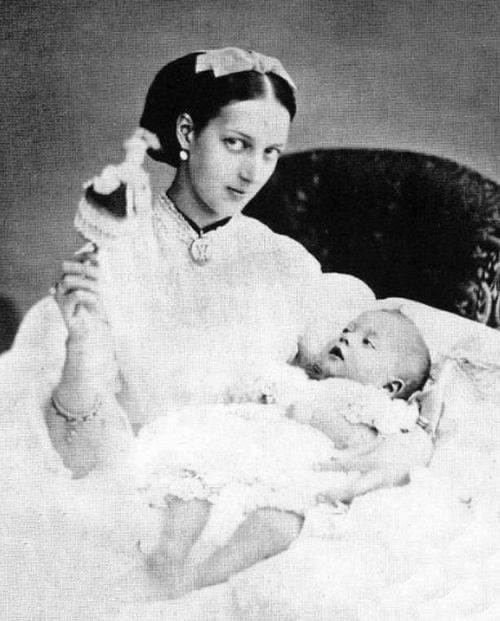
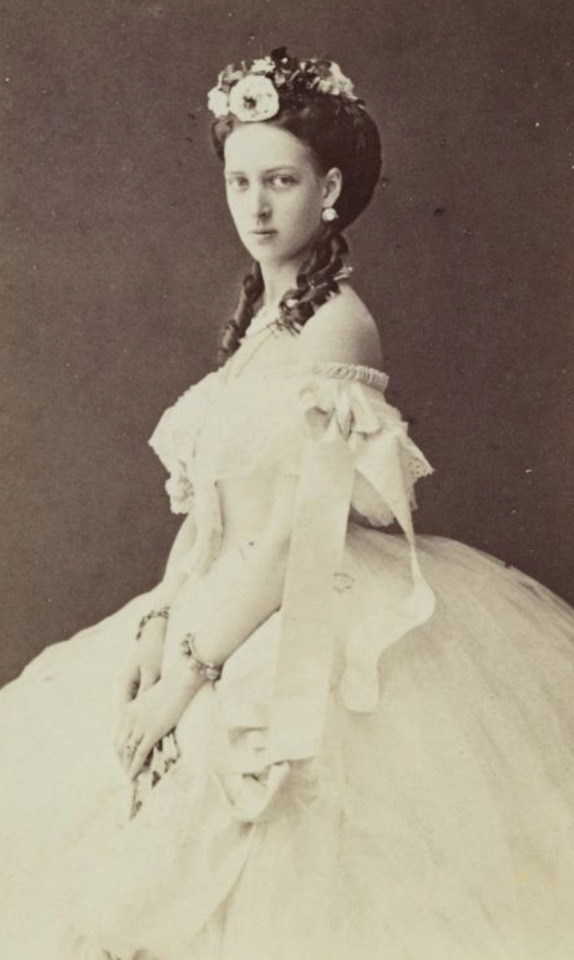
Empress Alexandra Of Austria, Queen Of Hungary (1816-1907)
age: 35
height: 5’10
birthday: 8th March
Early Life:
Princess Alexandra Caroline Marie Charlotte Louise Julia, or "Alix", as her immediate family knew her, was born at the Yellow Palace, an 18th-century town house at 18 Amaliegade, immediately adjacent to the Amalienborg Palacecomplex in Copenhagen.[1] Her father was Prince Christian of Schleswig-Holstein-Sonderburg-Glücksburg and her mother was Princess Louise of Hesse-Kassel.[2] She had five siblings: Frederick, William (later George I of Greece), Dagmar (later Empress of Russia), Thyra and Valdemar.
Her father's family was a distant cadet branch of the Danish royal House of Oldenburg, which was descended from King Christian III. Although they were of royal blood,[a] the family lived a comparatively modest life. They did not possess great wealth; her father's income from an army commission was about £800 per year and their house was a rent-free grace and favour property. Occasionally, Hans Christian Andersen was invited to call and tell the children stories before bedtime.

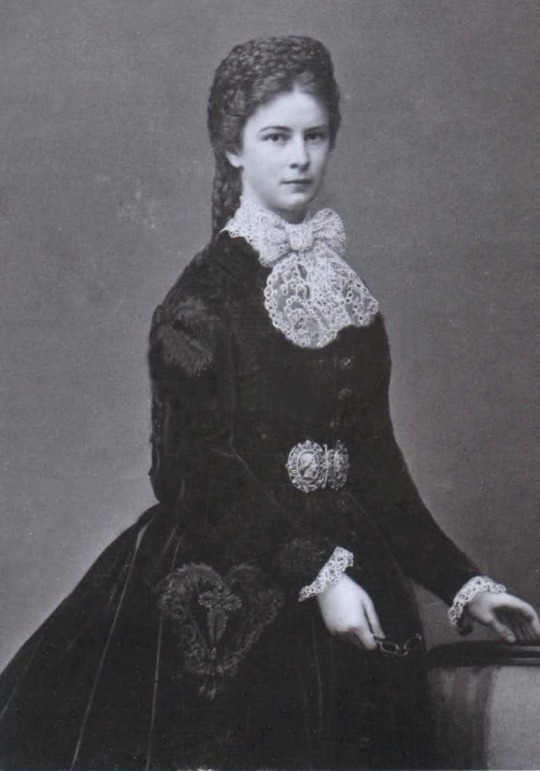

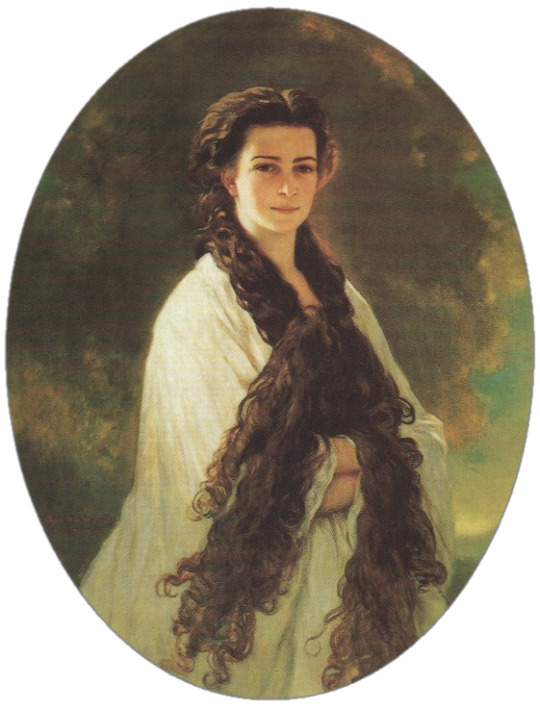

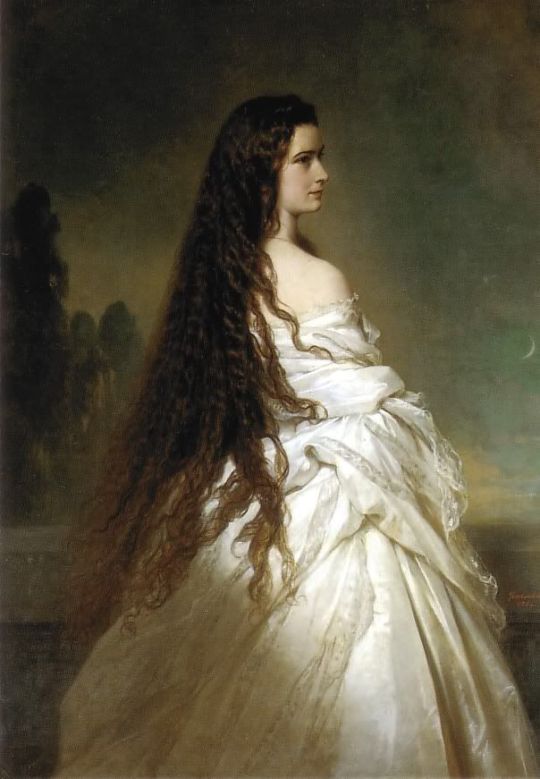
GrandDuchess Elisabeth Of Austria, Later Empress Of Austria And Queen Of Hungary at 19 Years old (1837-1927)
age: 14-15
height: 5’8
birthday: 24th December

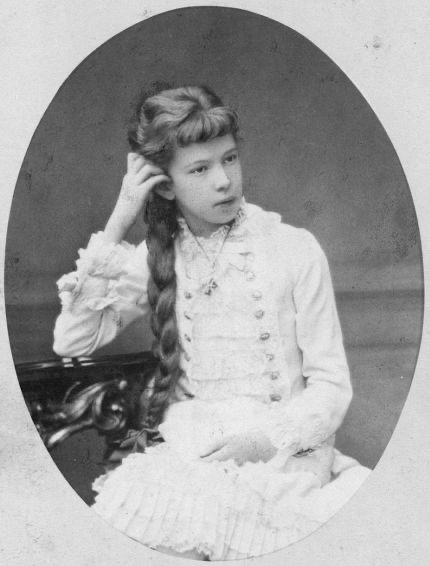
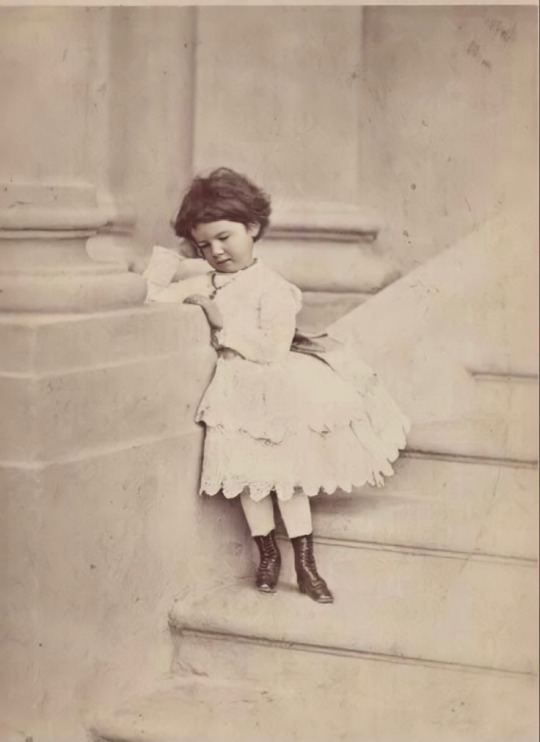
Marie Valerie (1840-1943) lmao Valerie lived a long time
Height: 5’3
age: 10
birthday: 24th april
5 notes
·
View notes
Photo









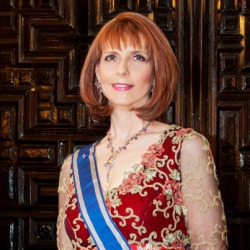
Royal Birthdays for today, July 13th:
Ferdinand III, Holy Roman Emperor, 1608
Amalie, Princess of Baden, 1776
Caroline of Baden, Queen of Bavaria, 1776
Alexandra Feodorovna, Empress Consort of all the Russias, 1798
Marie Anne of Portugal, Grand Duchess of Luxembourg, 1861
Caroline Reuss of Greiz, Grand Duchess of Saxe-Weimar-Eisenach, 1884
Louise Mountbatten, Queen of Sweden, 1889
Maria del Carmen, Princess of of Bourbon-Two Sicilies, 1924
Soamsawali, Princess of Thailand, 1957
Maria, Princess of Romania, 1964
#ferdinand iii#caroline of baden#amalie of baden#alexandra feodorovna#Charlotte of Prussia#Marie Anne of Portugal#louise mountbatten#Princess Soamsawali#maria of romania#princess maria del carmen#Caroline Reuss of Greiz
26 notes
·
View notes
Photo
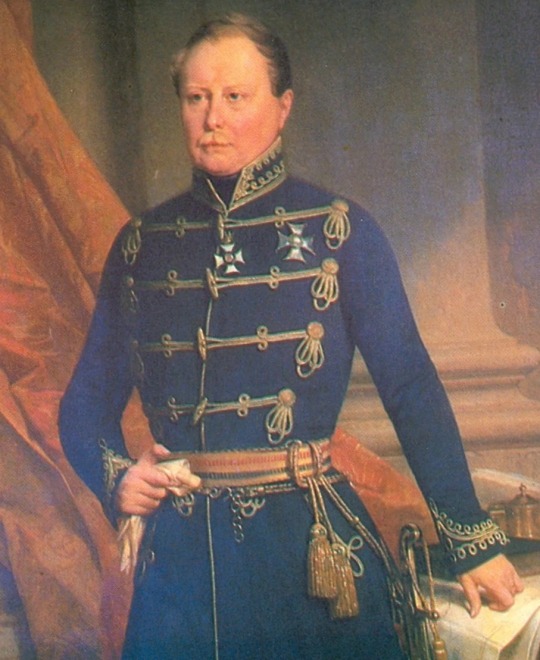
William Frederick Charles, King of Wurtemburg, who died on June 25, was at the time of his death the oldest reigning sovereign in Europe. He was the elder son of Frederick I, King of Wurtemburg, by his first consort (while Prince Royal) Augusta Caroline Frederica Louisa, daughter of Charles William Frederick, Duke of Brunswick-Wolfenbuttel. King William's mother had been a favourite of Catherine II of Russia, who eventually banished her to Siberia, passing her off as dead; and, on her actual death, Frederick I, still Prince Royal, came to England and married Charlotte Augusta Matilda, Princess Royal of England, eldest daughter of George III, which Princess died his widow and Queen Dowager of Wurtemburg, on Oct. 6, 1828. King William was born at Lubin, in Silesia, on Sept. 27, 1781, and led a wandering life in his youth, owing partly to the political agitation of the period, and partly to the harsh and uncongenial temper of the King, then the Elector, his father. He passed much time in Silesia, in Russia, in Switzerland, and in the Rhenish provinces. On the invasion of Wurtemburg by French armies, in 1796 and 1799, he was an involuntary exile; and from 1803 to 1806 he remained away, in consequence of hi disapproval of his father's despotic conduct, and took up his residence in Paris, where he completed his education. When his father, at the will of Napoleon, became King of Wurtemburg, the Prince continued to live a very retired life, being strongly adverse to this pliancy to the Imperial ruler of France, who, nevertheless, influenced the Prince's first marriage, in 1808, with the Princess Augusta of Bavaria; but the union was dissolved by mutual consent in 1814. The Prince had entered the army early, and in 1812 he commanded the Wurtemburg contingent of la grande armée. Subsequently, he had the command of the sevneth corps, of the allied army, and distinguished himself at Rothière and Mountmirail. He, while King, was propriétaire of the 6th Regiment of Austrian Hussars, and chief of the 25th Regiment of Russian Infantry. The Prince succeeded his father, as King of Wurtemburg, Oct 30, 1816, and after the despotic regime of Frederick I, was cordially welcomed to the throne. Nor did he disappoint the hopes and expectations of his subjects. He proved himself a worthy and efficient monarch. Upon his accession he set himself vigorously to reduce the expenditure, especially curtailing the expenses of the army. In other matters he also made valuable reforms, and throughout his reign was ever ready to carry out such reasonable and necessary changes as were required of him, when the innovation was not forced on him by revolt, nor savoured of revolution. His Majesty, in the course of time, became one of the most venerated monarchs in Europe, being looked on as a liberal honest prince, who loyally kept his word to this subjects, and a kind , unassuming man, whose happiness was the well-being of his people. On one of the public buildings of Stutgard may be seen an inscription in his honour, “Happy the land where love is the subject, and love is the lord.” In this honourable and prosperous way, King William reigned over Wurtemburg for nearly fifty years. His Majesty, who was a Knight of the Garter, married, secondly, Jan. 24, 1816, Catherine Paulowna, daughter of Paul, Emperor of Russia, widow of Prince Peter of Holstein-Oldenburg and by her (who died Jan. 9, 1819), he had two daughters – Princess Maria Frederica Charlotte, married to Alfred, Count de Niepperg; and Sophia Frederica Matilda, consort of the present King of Holland. King William married thirdly, April 15, 1820, his cousin, Pauline Theresa Louisa, daughter of Louis Frederic Alexander, Duke of Wurtemburg, and by her has had a son, his successor, and two daughters – viz. Princess Catherine Frederica Charlotte, married to Frederic, Prince of Wurtemburg, her cousin; and Princess Augusta Wilhelmina Henrietta, married to Hermann Bernard George, Prince of Saxe-Weimar, Colonel Commandant of the 2nd Regiment of Wurtemburg Cavalry. The King of Wurtemburg is succeeded by his only son, Charles Frederic Alexander, now Charles I, King of Wurtemburg, who was born March 6, 1823.
The life of the late monarch may be said to comprise the whole range of strictly modern history – of that history which the great French Revolution inaugurated. The deceased sovereign could remember Europe when it was still the Europe of the Middle Ages, when Germany was an Empire and Venice a Republic. At his birth the state over which he lived to reign was an inconsiderable Duchy, containing a population not much larger than that of Liverpool. He left it a Kingdom of nearly 2,000,000 inhabitants, and with territories doubled in extent and importance.
Chronicle, 1865
5 notes
·
View notes
Text
who: royal degrees of separation
The imperial, royal, princely and noble families of Europe have been intermarrying for thousands of years. This practice continues to this day, though not as frequently as in times past.
Karolina Augusta I of Mecklenburg is related to all current reigning and most non-reigning houses in Europe. Due to continual intermarriage, she is related to several families through various bloodlines. The lineage connecting her to these houses will be documented here. This is not an exhaustive list.
The closest relation is listed first, followed by any other notable shared ancestors.
REIGNING HOUSES OF EUROPE
Belgium
Karolina Augusta I and Philippe of the Belgians are fourth cousins as descendants of King Christian IX of Denmark and his wife Louise of Hesse-Kassel.
Karolina Augusta and Elisabeth, Duchess of Brabant are fourth cousins once removed.
Karolina Augusta and Philippe are also descendants of Maximilian I Joseph of Bavaria and his second wife Caroline of Baden.
Denmark
Karolina Augusta I and Margrethe II are second cousins once removed as descendants of Friedrich Franz III of Mecklenburg-Schwerin and his wife Grand Duchess Anastasia Mikhailovna of Russia.
Karolina Augusta and Crown Prince Frederik are third cousins.
Karolina Augusta and Margrethe are also descendants of Queen Victoria of the United Kingdom, and of King Christian IX of Denmark.
Liechtenstein
Karolina Augusta I and Hans-Adam II are fourth cousins twice removed as descendants of Maximilian I Joseph of Bavaria and his second wife Caroline of Baden.
Karolina Augusta and Hereditary Prince Alois are fifth cousins once removed.
Luxembourg
Karolina Augusta I and Henri of Luxembourg are fourth cousins as descendants of King Christian IX of Denmark and his wife Louise of Hesse-Kassel.
Karolina Augusta and Hereditary Grand Duke Guillaume are fourth cousins once removed.
Karolina Augusta and Henri are also descendants of Maximilian I Joseph of Bavaria and his wife Caroline of Baden.
Monaco
Karolina Augusta I and Albert II are fifth cousins as descendants of Florestan I of Monaco and his wife Maria Caroline Gibert de Lametz.
Karolina Augusta and Hereditary Prince Jacques are fifth cousins once removed.
The Netherlands
Karolina Augusta I and Willem-Alexander are third cousins once removed as descendants of Friedrich Franz II of Mecklenburg-Schwerin and his third wife Marie of Schwarzburg-Rudolstadt.
Karolina Augusta and Catharina-Amalia, Princess of Orange, are fourth cousins.
Karolina Augusta and Willem-Alexander are also descendants of George Victor, Prince of Waldeck and Pyrmont and his first wife Princess Helene of Nassau.
Norway
Karolina Augusta I and Harald V of Norway are third cousins once removed as descendants of King Christian IX of Denmark and his wife Louise of Hesse-Kassel.
Karolina August and Crown Prince Haakon are fourth cousins.
Karolina Augusta and Harald are also descendants of Queen Victoria of the United Kingdom and her husband Albert of Saxe-Coburg and Gotha.
Spain
Karolina Augusta I and Felipe VI of Spain are third cousins as descendants of Ernst August, Crown Prince of Hanover and his wife Thyra of Denmark.
Karolina Augusta and Leonor, Princess of Asturias are third cousins once removed.
Karolina Augusta and Felipe are also descendants of Queen Victoria of the United Kingdom and her husband Albert of Saxe-Coburg and Gotha.
Sweden
Karolina Augusta I and Carl XVI Gustaf of Sweden are third cousins twice removed as descendants of Queen Victoria of the United Kingdom and her husband Albert of Saxe-Coburg and Gotha.
Karolina Augusta and Crown Princess Victoria are fourth cousins once removed.
Karolina Augusta and Carl XVI Gustaf are also descendants of George Victor, Prince of Waldeck and Pyrmont and his first wife Princess Helene of Nassau.
The United Kingdom
Karolina Augusta I and Elizabeth II of the United Kingdom are third cousins once removed as descendants of King Christian IX of Denmark and his wife Louise of Hesse-Kassel.
Karolina Augusta I and Prince Philip, Duke of Edinburgh are second cousins twice removed as descendants of King Christian IX of Denmark and his wife Louise of Hesse-Kassel.
Karolina Augusta I and Charles, Prince of Wales are third cousins once removed through his father’s descent of King Christian IX of Denmark and his wife Louise of Hesse-Kassel.
Karolina Augusta is fourth cousins to the grandchildren of Prince Philip, Duke of Edinburgh.
Karolina Augusta and Elizabeth, and her husband, are also descendants of Queen Victoria of the United Kingdom and her husband Albert of Saxe-Coburg and Gotha.

NON-REIGNING HOUSES OF EUROPE
Austria-Hungary
Karolina Augusta I and Karl von Habsburg are fourth cousins once removed as descendants of King John of Saxony and his wife Amalie Auguste of Bavaria.
Karolina Augusta and Ferdinand Zvonimir are fifth cousins.
Karolina Augusta and Karl are also descendants of Ernst I, Prince of Hohenlohe-Langenburg and his wife Princess Feodora of Leiningen.
Baden (German Empire)
Karolina Augusta I and Max, Margrave of Baden second cousins once removed as descendants of Ernst August, Crown Prince of Hanover and his wife Thyra of Denmark.
Karolina Augusta I and Hereditary Prince Bernhard are third cousins.
Karolina Augusta I and Max are also descendants of Queen Victoria of the United Kingdom and her husband Albert of Saxe-Coburg and Gotha.
Bulgaria
Karolina Augusta I and Simeon II of Bulgaria are fourth cousins once removed as descendants of King John of Saxony and his wife Amalie Auguste of Bavaria.
Karolina Augusta and Boris, Prince of Turnovo are fifth cousins once removed.
Karolina Augusta and Simeon are also descendants of Francis, Duke of Saxe-Coburg-Saalfeld and his second wife Countess Augusta Reuss of Ebersdorf.
Greece
Karolina Augusta I and Constantine II of Greece are second cousins once removed as descendants of Ernst August, Crown Prince of Hanover and his wife Thyra of Denmark.
Karolina Augusta and Crown Prince Pavlos are third cousins.
Karolina Augusta and Constantine are also descendants of King Christian IX of Denmark, and of Queen Victoria of the United Kingdom.
Karolina Augusta and Crown Prince Pavlos are also descendants of Friedrich Franz III of Mecklenburg-Schwerin and his wife Grand Duchess Anastasia Mikhailovna of Russia.
Hannover (German Empire)
Karolina Augusta I and Ernst August V, Prince of Hannover are second cousins once removed as descendants of Ernst August, Crown Prince of Hannover and his wife Princess Thyra of Denmark.
Karolina Augusta and Ernst August, Hereditary Prince of Hannover are third cousins.
Karolina Augusta and Ernst August are also descendants of Queen Victoria of the United Kingdom and her husband Albert of Saxe-Coburg and Gotha.
Hesse (German Empire)
Karolina Augusta I and Donatus, Landgrave of Hesse are fourth cousins once removed as descendants of Queen Victoria of the United Kingdom and her husband Albert of Saxe-Coburg and Gotha.
Karolina Augusta I and Moritz, Hereditary Prince of Hesse are fifth cousins.
Hohenlohe-Langenburg (German Empire)
Karolina Augusta I and Philipp, Prince of Hohenlohe-Langenburg are third cousins once removed as descendants of Alfred, Duke of Saxe-Coburg and Gotha and his wife Grand Duchess Maria Alexandrovna of Russia.
Karolina Augusta and Hereditary Prince Max Leopold are fourth cousins.
Hohenzollern (German Empire)
Karolina Augusta I and Karl Friedrich, Prince of Hohenzollern are first cousins once removed as descendants of Karl, 6th Prince of Leiningen and his wife Grand Duchess Maria Kirillovna of Russia.
Karolina Augusta and Hereditary Prince Alexander are second cousins.
Leiningen (German Empire)
Karolina Augusta I is a niece of Andreas, 8th Prince of Leiningen.
Karolina Augusta I and Hereditary Prince Ferdinand are first cousins.
Mecklenburg-Strelitz (German Empire)
Karolina Augusta I and Borwin, Duke of Mecklenburg-Strelitz are fourth cousins once removed as descendants of John of Saxony and his wife Princess Amalia of Bavaria.
Karolina Augusta I and Hereditary Duke Alexander are fifth cousins.
Karolina Augusta I and Borwin, Duke of Mecklenburg-Strelitz’s most recent patrilineal ancestor is Adolf Friedrich I, Duke of Mecklenburg, who died in 1658.
Oldenburg (German Empire)
Karolina Augusta I and Christian, Duke of Oldenburg are first cousins once removed as descendants of Nikolaus, Hereditary Duke of Oldenburg and his wife Helen of Waldeck and Pyrmont.
Karolina Augusta I and Hereditary Duke Alexander are second cousins.
Portugal
Karolina Augusta I and Duarte Pio, Duke of Braganza are fourth cousins twice removed as descendants of Karl Ludwig, Prince of Hohenlohe-Langenburg and his wife Countess Amalie Henriette of Solms-Baruth.
Karolina Augusta and Afonso, Prince of Beira are fifth cousins once removed.
Prussia (German Empire)
Karolina Augusta I and Georg Friedrich, Prince of Prussia are second cousins once removed as descendants of Kirill Vladimirovich, Grand Duke of Russia and his wife Princess Victoria Melita of Saxe-Coburg and Gotha.
Karolina Augusta and Prince Carl Friedrich are third cousins.
Karolina Augusta and Georg Friedrich are also descendants of Friedrich Franz III, Grand Duke of Mecklenburg-Schwerin and his wife Grand Duchess Anastasia Mikhailovna of Russia.
Romania
Karolina Augusta I and King Michael I of Romania are second cousins twice removed as descendants of Alfred, Duke of Saxe-Coburg and Gotha and his wife Grand Duchess Maria Alexandrovna of Russia.
Karolina Augusta and Crown Princess Margareta are third cousins once removed.
Karolina Augusta and Michael are also descendants of King Christian IX of Denmark and his wife Louise of Hesse-Kassel.
Russia (Disputed)
Karolina Augusta I and Maria Vladimirovna are first cousins twice removed as descendants of Kirill Vladimirovich, Grand Duke of Russia and his wife Princess Victoria Melita of Saxe-Coburg and Gotha.
Karolina Augusta and Grand Duke George Mikhailovich are second cousins once removed.
Saxe-Coburg and Gotha (German Empire)
Karolina Augusta I and Andreas, Prince of Saxe-Coburg and Gotha are third cousins twice removed descendants of Queen Victoria of the United Kingdom and her husband Albert of Saxe-Coburg and Gotha.
Karolina Augusta and Hubertus, Hereditary Prince of Saxe-Coburg and Gotha are fourth cousins once removed.
Schleswig-Holstein (German Empire)
Karolina Augusta I and Christoph, Prince of Schleswig-Holstein are second cousins once removed as descendants of Friedrich August II, Grand Duke of Oldenburg and his second wife Duchess Elisabeth Alexandrine of Mecklenburg-Schwerin.
Karolina Augusta and Hereditary Prince Friedrich Ferdinand are third cousins.
Karolina Augusta and Christoph are also descendants of Alfred, Duke of Saxe-Coburg and Gotha and his wife Grand Duchess Maria Alexandrovna of Russia.
Waldeck and Pyrmont (German Empire)
Karolina Augusta I and Wittekind, Prince of Waldeck and Pyrmont are first cousins twice removed as descendants of Friedrich August II, Grand Duke of Oldenburg and his second wife Duchess Elisabeth Alexandrine of Mecklenburg-Schwerin.
Karolina Augusta and Hereditary Prince Carl-Anton are second cousins once removed.
Wied (German Empire)
Karolina Augusta I and Maximilian, 9th Prince of Wied are third cousins as descendants of Friedrich August II, Grand Duke of Oldenburg and his second wife Duchess Elisabeth Alexandrine of Mecklenburg-Schwerin.
Yugoslavia/Serbia
Karolina Augusta I and Alexander, Crown Prince of Yugoslavia are third cousins once removed as descendants of Alfred, Duke of Saxe-Coburg and Gotha and his wife Grand Duchess Maria Alexandrovna of Russia.
Karolina August and Hereditary Prince Peter are fourth cousins.
0 notes
Text

On this 24th of December, of course, there was nothing to indicate that the little person who was soon to see the light of day had an unusual life ahead of her. Nor was it a special service that the three ministers had to perform on Christmas Eve of all days in Duke Maximilian's palace in Ludwigstraße. It was merely a matter of certifying the birth of another member of the House of Wittelsbach, which was part of their official duties. The twenty-nine-year-old head of the house, Duke Maximilian Joseph in Bavaria, became a father for the fourth time in these hours. Two sons and a daughter had already been given to him — although the second of his sons had died in his first year. Now his wife Ludovika was once again in labour. She had actually wanted to spend the hours of the gift-giving with her mother on this Christmas Eve, but her doctor had forbidden it. He suspected that the labour pains would begin on that very evening — and he was right.
The ministers had been waiting for over an hour when Ludovika — or Louise, as the twenty-nine-year-old was also called in the family circle - went through the final stage of her fourth delivery. The birth took place in Ludovika's “white boudoir”. For her emotional support, she was assisted by four women who were also her closest confidants: her mother, the widowed Queen Caroline of Bavaria; her former governess, the now Obersthofmeisterin Countess Auguste of Rottenhan; her half-sister Duchess Auguste of Leuchtenberg, twenty years her senior, who resided in the nearby Palais Leuchtenberg, and her daughter Eugenie, wife of the Hereditary Prince of Hohenzollern-Hechingen. Ludovika's two ladies-in-waiting kept themselves ready in the adjoining rooms. Their task was to be at the service of their mistress's high relatives as soon as they left the boudoir of the woman in childbirth.
Ludovika's appartment directly adjoined the ceremonial rooms of the ducal palace, which also included the reception salon with its mythological frescoes. The ministers waiting here assumed that the birth would not take much longer; otherwise they would not have been brought to the palace — especially on Christmas Eve. In cases like this, they were never notified after the first onset of labour.
Exactly one hour and thirteen minutes after the ministers arrived at the Palais, their wait came to an end: the second daughter of Duke Maximilian and Duchess Ludovika saw the light of day. Now the ministers were called to the boudoir of the duchess, where the midwife presented the newborn to them. The fact that Duchess Ludovika was resting on the chaise longue in her nightdress and dressing gown after the strains of childbirth and that neither her clothes nor her hair were in a condition to receive foreign visitors, indeed that a woman of royal blood never received or had to receive gentlemen in her boudoir anyway — all this was overlooked. After all, the court regulations had to be complied with. And these demanded that a newborn child be presented to the responsible high state officials immediately after birth. This was to ensure that a child whose name was entered on the birth certificate as a legitimate member of the House of Wittelsbach actually had the mistress of the house as its mother. Incidentally, this was also the reason why the ministers had to wait near the woman giving birth. The child's ducal origin and its rightful affiliation to the Wittelsbach dynasty were to be guaranteed beyond doubt. At least the duchess was spared the presence of official witnesses during the delivery. Unlike at the British royal court, Ludovika did not have to go through the intimate act of birth in front of the ministers, protected only by a kind of mobile screen that covered the lower half of the woman's body but exposed her upper body to the gaze of family strangers.
The official act of witnessing was done quickly. After seeing the baby and offering the obligatory congratulations, Sebastian Freiherr von Schrenk, Ludwig Ritter von Wiesinger and Freiherr von Gise left the boudoir. They noted in the birth protocol that another princess had been born to the House of Wittelsbach at exactly ten o'clock and forty-three minutes on the evening of 24 December 1837. They had thus fulfilled their duty and could hurry home to their families.
The newborn girl was given the name Elisabeth Amalie Eugenie. The godmother was an older sister of Ludovika — Elisabeth Ludovika of Prussia, who would become Queen of Prussia three years after the birth of her godchild. The little princess was given her second name, Amalie, in honour of her godmother's twin sister, later Queen of Saxony. Finally, the third name Eugenie referred to the cousin who had assisted Ludovika in her labour. Two days after her birth, Elisabeth was baptised in the collegiate church of St. Kajetan, the court church in Munich called “Theatinerkirche”.
Winkelhofer, Martina (2021). Sisis Weg: Vom Mädchen zur Frau – Kaiserin Elisabeths erste Jahre am Wiener Hof (Translation done by DeepL. Please keep in mind that in a machine translation a lot of nuance may/will be lost)
ON THIS DAY, IN 1837, DUCHESS ELISABETH AMALIE EUGENIE IN BAVARIA WAS BORN. She was the fourth child and second daughter of Duke Maximilian in Bavaria and his wife, Princess Ludovika of Bavaria. At 16 years-old she married her cousin Emperor Franz Josef I of Austria and became the second to last Empress of Austria and Queen of Hungary.
#happy birthday girl you'll always be famous<3#empress elisabeth of austria#ludovika of bavaria duchess in bavaria#queen caroline of bavaria#auguste of bavaria duchess of leuchtenberg#eugenie of leuchtenberg princess of hohenzollern-hechingen#on this day in history#maximilian joseph duke in bavaria#house of wittelsbach#historicwomendaily#Sisis Weg: Vom Mädchen zur Frau – Kaiserin Elisabeths erste Jahre am Wiener Hof#historian: martina winkelhofer
73 notes
·
View notes
Text

Young Caroline of Baden, Queen of Bavaria
#caroline of baden#queen of bavaria#princess of baden#zahringen#wittelsbach#bavaria#baden#royalty#mine
13 notes
·
View notes
Text
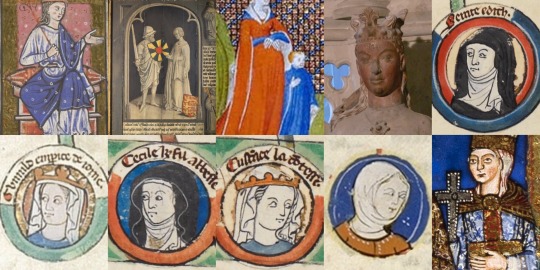
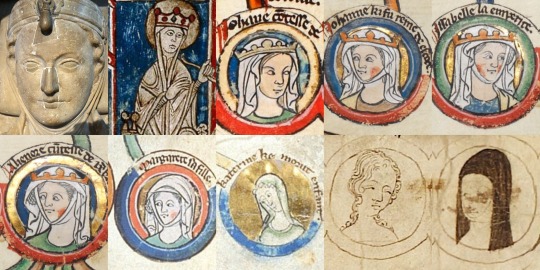
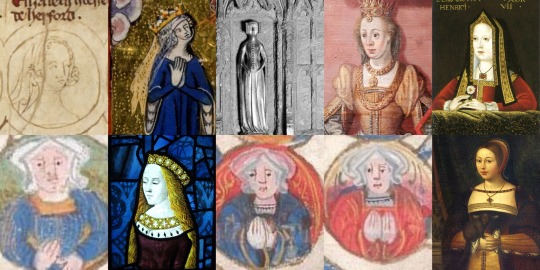

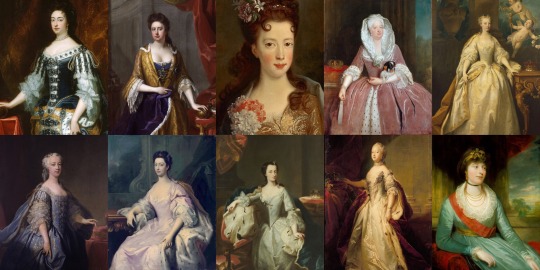

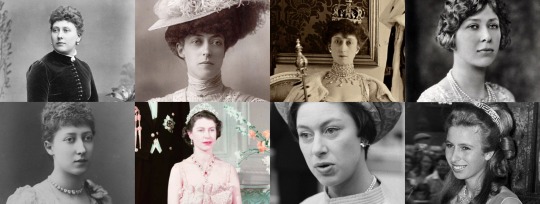
Every English Princess Ever
You’ve heard of Every Queen of England Ever, now I present to you another product that proves I have way too much time on my hands! If you notice any mistakes, please point them out to me kindly. I am sorry I do not know everything, but there is no reason to be rude. 😁
Æthelswith - Daughter of Æthelwulf and his first wife Osburh. She married King Burgred of Mercia in 853, making her the Queen of Mercia.
Æthelflæd - Daughter of Alfred the Great and Ealhswith. When her husband Æthelred, Lord of Mercians died in 911, she became Lady of the Mercians, and reigned for seven years.
Æthelgifu - Daughter of Alfred the Great and Ealhswith. When Alfred founded Shaftesbury Abbey in 890, he made her its first abbess.
Ælfthryth - Daughter of Alfred the Great and Ealhswith. Her marriage to Baldwin II, Count of Flanders made her Countess of Flanders.
Eadgifu - Daughter of Edward the Elder and his second wife Ælfflæd. She was Queen of West Francia by her marriage to Charles III.
Eadhild - Daughter of Edward the Elder and his second wife Ælfflæd. She married Hugh, Duke of the Franks in 937.
Eadgyth - Daughter of Edward the Elder and his second wife Ælfflæd. She married Otto in 930, who became Otto I, King of Germany in 936, also making her Queen of Germany.
Eadburh - Daughter of Edward the Elder and his third wife Eadgifu. She lived her life as a nun.
Godgifu - Daughter of Æthelred the Unready and his second wife Emma of Normandy. Her marriage to Eustace II, Count of Boulogne made her Countess of Boulogne.
Gunhilda - Daughter of Cnut the Great and his second wife Emma of Normandy. She became Queen of Germany when she married Henry III.
Gytha - Daughter of Harold II and Edith Swanneck. She was Princess of Rus from her marriage to Vladimir II Monomakh.
Adeliza - Daughter of William the Conqueror and Matilda of Flanders.
Cecilia - Daughter of William the Conqueror and Matilda of Flanders. She was entered into the Abbey of the Holy Trinity of Caen at a young age, and became Abbess in 1112.
Constance - Daughter of William the Conqueror and Matilda of Flanders. She became Duchess of Brittany when she married Alan IV, Duke of Brittany.
Adela - Daughter of William the Conqueror and Matilda of Flanders. She was Countess of Blois by her marriage to Stephen, Count of Blois, and was regent of Blois two times.
Empress Matilda - Daughter of Henry I and Matilda of Scotland. She became Holy Roman Empress in 1114, and acted as Queen of England from 1141 to 1148, but was disputed.
Marie I - Daughter of Stephen and Matilda I, Countess of Boulogne. When her brother William I, Count of Boulogne died childless in 1159, Marie succeeded him as the Countess of Boulogne.
Matilda - Daughter of Henry II and Eleanor of Aquitaine. She was Duchess of Saxony and Bavaria from her marriage to Henry the Lion.
Eleanor - Daughter of Henry II and Eleanor of Aquitaine. She became Queen of Castile and Toledo when she married Alfonso VIII.
Joan - Daughter of Henry II and Eleanor of Aquitaine. She was Queen of Sicily by her marriage to William II until his death in 1189, and became Countess of Toulouse when she married Raymond VI in 1196.
Joan - Daughter of John and Isabella of Angoulême. She was Queen of Scotland by her marriage to Alexander II.
Isabella - Daughter of John and Isabella of Angoulême. She was Holy Roman Empress and Queen of Sicily and Germany by her marriage to Frederick II.
Eleanor - Daughter of John and Isabella of Angoulême. She was Countess of Pembroke by her first marriage to William Marshal, 2nd Earl of Pembroke, and Countess of Leicester by her second marriage to Simon de Montfort, 6th Earl of Leicester.
Margaret - Daughter of Henry III and Eleanor of Provence. She was Queen of Scotland by her marriage to Alexander III.
Beatrice - Daughter of Henry III and Eleanor of Provence. (Her wikipedia says she was Countess of Richmond, which I’m not sure is true or not. Her husband was the Duke of Brittany, but it is possible she somehow inherited the title in her own right).
Katherine - Daughter of Henry III and Eleanor of Provence. She passed away at the age of three.
Eleanor - Daughter of Edward I and Eleanor of Castile. She was Countess of Bar by her marriage to Henry III, Count of Bar.
Joan of Acre - Daughter of Edward I and Eleanor of Castile. She was Countess of Hertford and Gloucester by her first marriage to Gilbert de Clare, 7th Earl of Gloucester and 6th Earl of Hertford.
Margaret - Daughter of Edward I and Eleanor of Castile. She was Duchess of Brabant, Lothier and Limburg by her marriage to John II.
Mary of Woodstock - Daughter of Edward I and Eleanor of Castile. She was a nun at Amesbury Priory.
Elizabeth of Rhuddlan - Daughter of Edward I and Eleanor of Castile. She was Countess of Holland by her first marriage to John I, and Countess of Hereford by her second marriage to Humphrey de Bohun, 4th Earl of Hereford.
Eleanor of Woodstock - Daughter of Edward II and Isabella of France. She was Duchess of Guelders by her marriage to Reginald II, and was regent of Guelders while her son was still young.
Joan of the Tower - Daughter of Edward II and Isabella of France. She got her name from being born in the Tower of London. Joan was Queen of Scotland by her marriage to David II.
Isabella - Daughter of Edward III and Philippa of Hainault. She was Countess of Bedford and Lady of Coucy by her marriage to Enguerrand VIII, and was made a Lady of the Garter in 1376.
Joan - Daughter of Edward III and Philippa of Hainault. She died during the Black Death at the age of fourteen.
Mary of Waltham - Daughter of Edward III and Philippa of Hainault. She was Duchess of Brittany by her marriage to John IV, Duke of Brittany, and was made a Lady of the Garter in 1378. She died young at the age of sixteen.
Margaret of Windsor - Daughter of Edward III and Philippa of Hainault. She was Countess of Pembroke by her marriage to John Hastings, 2nd Earl of Pembroke. Margaret died young at the age of fifteen.
Blanche of Lancaster - Daughter of Henry IV and Mary de Bohun. She was Electress Palatine by her marriage to Louis III, Electress Palatine.
Philippa of Lancaster - Daughter of Henry IV and Mary de Bohun. She was Queen of Denmark, Sweden and Norway by her marriage to Eric III, VIII & XIII.
Elizabeth of York - Daughter of Edward IV and Elizabeth Woodville. She was Queen of England by her marriage to Henry VII.
Mary of York - Daughter of Edward IV and Elizabeth Woodville. She died at the age of fourteen.
Cecily of York - Daughter of Edward IV and Elizabeth Woodville. She was First Lady of the Bedchamber to her sister, Elizabeth of York, from 1485 to 1487. Cecily was Viscountess Welles by her marriage to John Welles, 1st Viscount Welles.
Margaret of York - Daughter of Edward IV and Elizabeth Woodville. She died at just eight months old.
Anne of York - Daughter of Edward IV and Elizabeth Woodville. She was First Lady of the Bedchamber to her sister, Elizabeth of York, from 1487 to 1494.
Catherine of York - Daughter of Edward IV and Elizabeth Woodville. She was Countess of Devon by her marriage to William Courtenay, 1st Earl of Devon.
Bridget of York - Daughter of Edward IV and Elizabeth Woodville. She was a nun at Dartford Priory.
Margaret Tudor - Daughter of Henry VII and Elizabeth of York. She was Queen of Scotland by her marriage to James IV of Scotland.
Elizabeth Tudor - Daughter of Henry VII and Elizabeth of York. She died at the age of three.
Mary Tudor - Daughter of Henry VII and Elizabeth of York. She was Queen of France by her first marriage to Louis XII of France, and Duchess of Suffolk by her second marriage to Charles Brandon, 1st Duke of Suffolk.
Mary I - Daughter of Henry VIII and Catherine of Aragon. She was Queen of England from 1553 to 1558, and Queen of Spain by her marriage to Philip II of Spain.
Elizabeth I - Daughter of Henry VIII and Anne Boleyn. She was Queen of England from 1558 to 1603.
Elizabeth Stuart - Daughter of James VI & I and Anne of Denmark. She was Electress Palatine and Queen of Bohemia by her marriage to Frederick V.
Margaret Stuart - Daughter of James VI & I and Anne of Denmark. She died at the age of one year old.
Mary Stuart - Daughter of James VI & I and Anne of Denmark. She died at the age of two years old.
Sophia Stuart - Daughter of James VI & I and Anne of Denmark. She lived for just one day.
Mary - Daughter of Charles I and Henrietta Maria. She was Princess of Orange and Countess of Nassau by her marriage to William II, Prince of Orange.
Elizabeth Stuart - Daughter of Charles I and Henrietta Maria. She died at the age of fourteen.
Anne Stuart - Daughter of Charles I and Henrietta Maria. She died at the age of three.
Henrietta - Daughter of Charles I and Henrietta Maria. She was Duchess of Orléans by her marriage to Philippe I, Duke of Orléans.
Mary II - Daughter of James II & VII and Anne Hyde. She was Queen of England from 1689 to 1694.
Anne - Daughter of James II & VII and Anne Hyde. She was Queen of England and Great Britain from 1702 to 1714.
Louisa Maria Stuart - Daughter of James II & VII and Mary of Modena. She died at the age of nineteen.
Sophia Dorothea of Hanover - Daughter of George I and Sophia Dorothea of Celle. She was Queen of Prussia and Electress Brandenburg by her marriage to Frederick William I of Prussia.
Anne - Daughter of George II and Caroline of Ansbach. She was Princess of Orange by her marriage to William IV, Prince of Orange.
Amelia of Great Britain - Daughter of George II and Caroline of Ansbach.
Caroline Elizabeth of Great Britain - Daughter of George II and Caroline of Ansbach.
Mary of Great Britain - Daughter of George II and Caroline of Ansbach. She was Landgravine of Hesse-Kassel by her marriage to Frederick II, Landgrave of Hesse-Kassel.
Louise of Great Britain - Daughter of George II and Caroline of Ansbach. She was Queen of Denmark and Norway by her marriage to Frederick V of Denmark.
Charlotte - Daughter of George III and Charlotte of Mecklenburg-Strelitz. She was Duchess, Electress and Queen of Württemberg by her marriage to Frederick I of Württemberg.
Augusta Sophia - Daughter of George III and Charlotte of Mecklenburg-Strelitz.
Elizabeth - Daughter of George III and Charlotte of Mecklenburg-Strelitz. She was Landgravine of Hesse-Homburg by her marriage to Frederick VI, Landgrave of Hesse-Homburg.
Mary - Daughter of George III and Charlotte of Mecklenburg-Strelitz. She was Duchess of Gloucester and Edinburgh by her marriage to Prince William Frederick, Duke of Gloucester and Edinburgh.
Sophia - Daughter of George III and Charlotte of Mecklenburg-Strelitz.
Amelia - Daughter of George III and Charlotte of Mecklenburg-Strelitz.
Charlotte of Wales - Daughter of George IV and Caroline of Brunswick. She was their only child, and died before both of them.
Charlotte Augusta Louisa of Clarence - Daughter of William IV and Adelaide of Saxe-Meiningen. She died shortly after birth.
Elizabeth Georgiana Adelaide of Clarence - Daughter of William IV and Adelaide of Saxe-Meiningen. She died shortly after birth.
Victoria - Daughter of Queen Victoria and Prince Albert. She was German Empress and Queen of Prussia by her marriage to Frederick III, German Emperor.
Alice - Daughter of Queen Victoria and Prince Albert. She was Grand Duchess of Hesse and Rhine by her marriage to Louis IV, Grand Duke of Hesse.
Helena - Daughter of Queen Victoria and Prince Albert. She was Princess of Schleswig-Holstein by her marriage to Prince Christian of Schleswig-Holstein.
Louise - Daughter of Queen Victoria and Prince Albert. She was Duchess of Argyll and Viceregal of Canada by her marriage to John Campbell, 9th Duke of Argyll.
Beatrice - Daughter of Queen Victoria and Prince Albert. She was Princess of Battenberg by her marriage to Prince Henry of Battenberg.
Louise of Wales - Daughter of Edward VII and Alexandra of Denmark. She was Duchess of Fife by her marriage to Alexander Duff, 1st Duke of Fife.
Victoria of Wales - Daughter of Edward VII and Alexandra of Denmark.
Maud of Wales - Daughter of Edward VII and Alexandra of Denmark. She was Queen of Norway by her marriage to Haakon VII of Norway.
Mary of York - Daughter of George V and Mary of Teck. She was Countess of Harewood by her marriage to Henry Lascelles, 6th Earl of Harewood.
Elizabeth II - Daughter of George VI and Elizabeth Bowes-Lyon. She is Queen of the UK from 1952 to present.
Margaret Rose of York - Daughter of George VI and Elizabeth Bowes-Lyon. She was Countess of Snowdon.
Anne of Edinburgh - Daughter of Elizabeth II and Prince Philip.
#british history#historical women#empress matilda#elizabeth of york#margaret tudor#mary i#elizabeth i#british royal family
158 notes
·
View notes
Text
(Some) Greek Gods as Historical Figures
So some days ago I secretly logged back into Mythology and Cultures amino and I stumbled across post of casting historical figures as the gods from Greek mythology. Of course, I hated it, so I made my version of this.
Note: Of course, this is going to have quite a lot of Napoleonic figures, since I am more familiar of this period, but please do reblog this post (or tag me on another post) with the hashtag “#mythical figures as historical people” and add some more of your historical figure Greek God fancasts!
Note 2: this post is for entertaining purpose, and just me introducing some guys to y’all and I am not a historian myself and hopefully you all would still like my takes😅
1. Zeus - Louis XIV of France

First and foremost, I shall introduce the king of gods featured in Greco-Roman myths. You may ask, why don’t I cast Henry VIII of England? Well, my reason is very simple: Henry is far from accurate to Zeus in actual myths.
To be honest, Zeus has a more “absolute power” energy in it, and Louis XIV totally has rocked it (like that iconic line “l’état, c’est moi (I am the state)”). Well, Henry also has that kind of energy but everyone only remembers his six wives and the uncountable number of bloodshed (not to mention Catherine of Aragon is a much better fighter than him—got this from Horrible Histories OwO)... Anyways, Louis XVI is basically a Zeus.
2. Hera - Catherine of Aragon

This brings to Catherine of Aragon herself. She’s a total Q U E E N and if you have watched “Six” the musical you already got what I mean (like, being the wife who married to Henry the longest). There’s also the early warlike aspect in Hera (featured in Homer’s works) that Catherine has it as well (at least you know that she’s getting more victories than Henry if you have watched Horrible Histories season 6, in the episode with Rowan Atkinson playing Henry VIII (which is sad because I want Ben Willbond to play him—he iconic to the HH fandom)), making her a great casting of Hera.
Hera, in my opinion, is a very strong woman who has to take Zeus’s shit and I could totally understand why she took revenge on the girls that Zeus has slept with—but anyways, hopefully you guys would like it :3
3. Aphrodite - Pauline Bonaparte
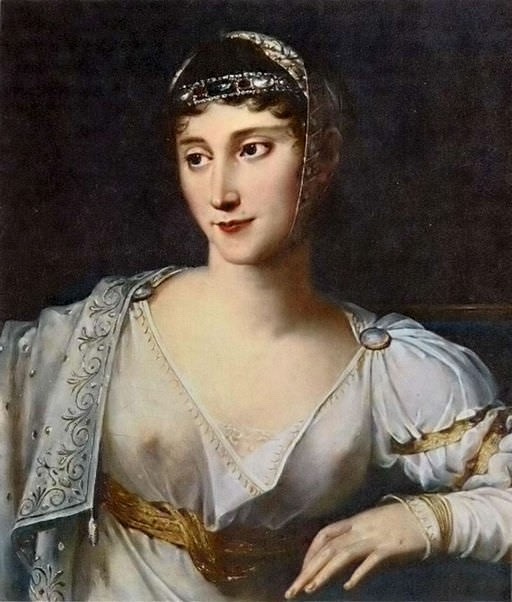
This is half-self-explanatory, really—just look at that statue she posed as Venus, the Roman equivalent of Aphrodite.
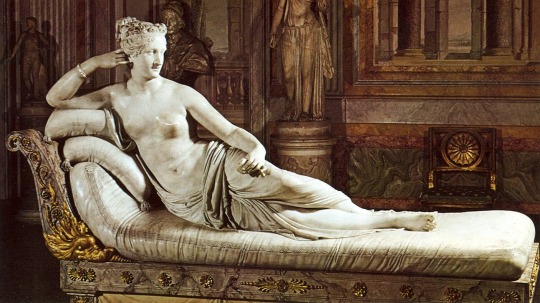
Pauline was famed for her beauty in her time, also a big chunk of scandals from her affairs (which bugs her big brother Napoleon, a lot). Nevertheless, despite her big spending habits and a great sexual appetite, she always helped Napoleon in some surprising ways (like she sold her house in Paris to the Duke of Wellington to get the funds for Napoleon).
Just like Aphrodite herself, Pauline harnessed her beauty very well. Thus, I rest my case.
4. Apollo - Joachim Murat or Emperor Franz Joseph I of Austria
(Warning: long content ahead)

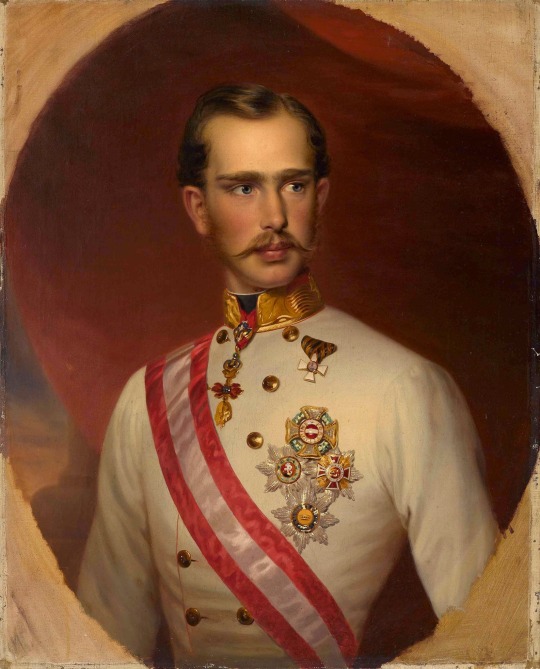
Firstly, let me briefly introduce them because you guys might not know them much.
Joachim Murat was a marshal of France, also one of Napoleon’s brother-in-law, grand duke of Berg and Cleves from 1806 to 1808 and the King of Naples from 1808 to 1815. After the wars, he attempted to escape yet was caught and executed in 1815 in Pizzo, Italy (if you have read of Alexandre Dumas’s “Famous Crimes” you might know him—by the way no one has cut his head off and sent it to that big nose King Ferdinand).
For those who have watched “Elisabeth” or the “Sissi” movies, you might know Franz Joseph I of Austria already but you might not know much about himself besides being the husband of the (in)famous Empress Sisi (ie. Empress Elisabeth of Austria). He was the Emperor of the Austria from 1848 to his death in 1916—one of the longest reigning European monarchs in history. During his reign, the empire had been through a lot of change, most notably, the creation of Austria-Hungary. Nevertheless, he was also the Emperor who started World War I and he died of old age in the midst of the Great War.
For Apollo, I’m not casting musicians because this is quite overdone. I rather want to shed a light to the other arts that he represented in Greco-Roman mythology. This makes me want to draw a parallel to Joachim Murat as he was also a great sucker of classical literature. Plus, he also was known to be a flamboyant dresser (his nickname was “the Dandy King” by the way), also the designer of the uniforms of the Neapolitan army (with an excessive amount of amaranth, perhaps his favourite colour). Really, everyone just sees him as a great flamboyant himbo but in reality, he’s iconically badass in the battlefield as the First Horseman of Europe. Well, also he’s known for being extremely good with women even though his wife Caroline was fierce as hell. So, in my opinion, he fits the image of Apollo that we know.
However, you guys might feel surprised why I picked Franz Joseph for Apollo. Well, he really... was a rather mediocre ruler in my opinion, and perhaps our most memorable image of him was the senile emperor who signed the declaration of war to Serbia. Nevertheless, he was a well-liked man among his subjects, at least to some old citizens of Austria-Hungary telling future generations. Besides, culture flourished in Vienna under his reign—with notable figures like Sigmund Freud, Ludwig Wittgenstein and Erwin Schrödinger. Despite the series of unfortunate events which made the empire started to crumble, Austria-Hungary arguably has its cultural importance in Europe. Sounds like what Apollo would do if he’s a ruler, somehow.
Well, enough of his political achievements, let’s talk about his private life... which was probably the actual reason why I picked him.
Enter Duchess Elisabeth in Bavaria, the Empress of Austria and Queen of Hungary, also known as Sisi.
On a side note, Marshal Louis-Alexandre Berthier of France, Prince of Neufchâtel and of Wargram, was Empress Sisi’s grand-uncle in-law via his marriage to Duchess Maria Elisabeth in Bavaria

Absolutely love Pia as Elisabeth in the musical so please don’t mind me using a gif from this :3 ((also, “Elisabeth” spoiler alert
Franz originally was to marry her sister Helene (nicknamed Néné), nevertheless, on the first meeting in Bad Ishl, he has fallen for the young Elisabeth, head over heels—making him defying his domineering mother, Archduchess Sophie, for the very first time. Elisabeth also liked him and did not expressed her refusal either, so they got married in St. Augustine’s Church in 29th April, 1854.
However, the marriage was not well. Sisi was not accustomed to the strict Austrian court especially Archduchess Sophie (also she was not really a fan of intimacy). Poor Franz was rather helpless in situations between his mother and his wife, and eventually, Sisi chose her freedom over her duty as Empress, traveling around the world. They two briefly went back together during the Austro-Hungarian compromise, yet she was constantly not there. Eventually, Sisi was assassinated by an anarchist named Luigi Lucheni during her stay in Geneva, Switzerland, and Franz was devastated over her death (“she will never know how much I love her”).
To Franz, he loved her so, but he really didn’t understand her needs. Even though he had countless mistresses and female companions in Vienna, he still missed his wife. I say, he was really unlucky when it comes to love. Like Apollo himself, he dated countless nymphs and humans, but a lot of his notable relationships did not have a good end. (Probably Cyrene was the most lucky one, yet she also has chosen to be left alone after mothering several children with Apollo.) For this, I picked Franz Joseph as Apollo.
5. Ares - Jean Lannes or Michel Ney
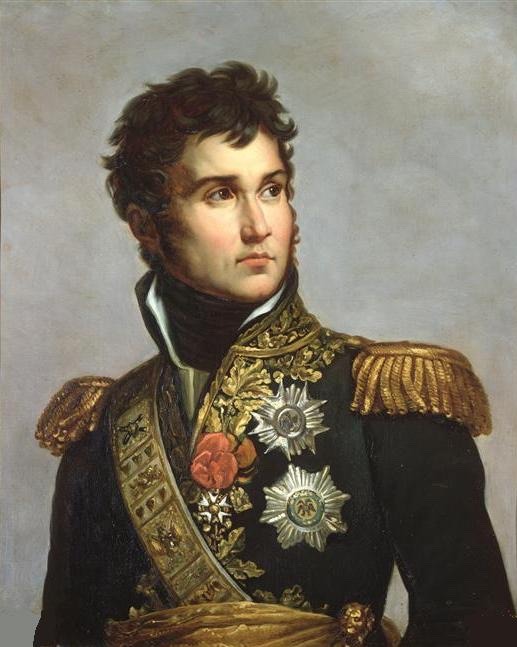
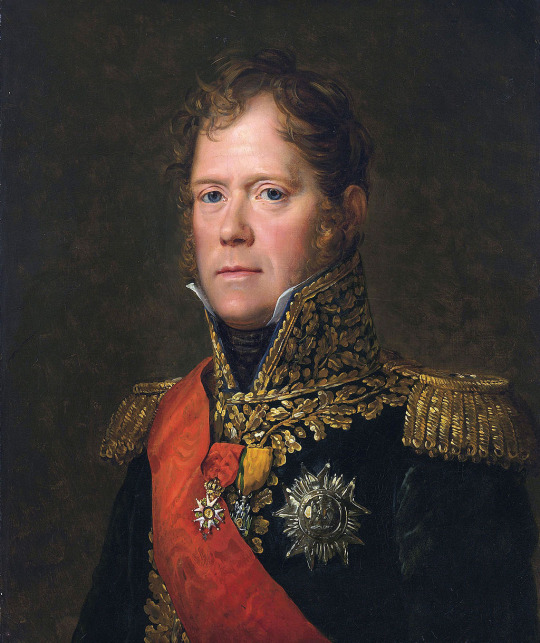
As usual, for those who don’t know much history, I shall briefly introduce my babeys these two great soldiers.
Jean Lannes was one of the marshals of Napoleon, known for being one of Napoleon’s closest friends and his fiery personality, and is considered one of the best marshals of the 1st French Empire. His finest moments including the Battle of Ratisbon in which he led his men to storm the well-guarded city with ladders (hence his nickname “ladder lord” in our very humble Napoleonic marshalate fandom :3). Sadly, he died of the wound he received in the battle of Aspern-Essling in 1809.
Michel Ney was also one of the marshals of Napoleon, known for his extreme valour (yep, he is known as the “Bravest of the Brave”). As you might know, he was one of the marshals who was in Waterloo, yet, his finest hour was during the retreat from Russia in the disasterous 1812. Sadly, he was arguably the most prominent victim of the White Terror under the second Bourbon restoration, executed in 1815 (**I am not accepting any kind of conspiracy theories of my babey survived and died in America😤).
Speaking of Ares, I have a lot of things to say (that’s my dad ;-; no jkjk). He is really not that bloodthirsty idiot who casually hates humans. Well, he’s more like a fiery dork and a man who was very faithful to his lovers, and fights very well (by the way also one of the best dads). So, the bois that come into my mind are automatically two of the most courageous marshals of France.
Lannes, if I have to get him a godly parent, it would definitely Ares. He resembled the god a lot (also I sometimes imagined Ares as a smol bean with dark hair), probably looks the most like Ares himself. He got that fiery temper, that faithfulness to his wife Louise, also being a very courageous fighter in the field—well he literally was like, “NO LEMME STORM DAT CITY *grabs ladder*”.

There you have it, my big bro our ladder lord Jean Lannes who can pull off a perfect Ares.
Ney is like a slightly introverted (and mature) version of an Ares person. You can guess his temper already through his famed auburn hair, and indeed despite his shy exterior his temper sometimes was a bit explosive, and a bit impatient (which was somehow one of his fatal flaws). He was a great fighter, known as a skilled swordsman in his youth. And you all know how brave he is in his famed epithet. Michel Ney is purely badass (and C U T E) you know (and he needs a lot of hugs because he has really been though a lot in the wars, and was a possible case of PTSD which was shown in his arguably suicidal behaviour during the battle of Waterloo). That’s why I casted him as the Greek god Ares OwO
//
And there you have it, my interpretations on the Greek gods via people in history. I originally would like to include more but somehow I realised that I have written too much about my picks. So, if you want to add more, reblog this post or tag me on the post you made on this topic (and please use the hashtag “mythical figures as historical people” so that I could look into your choices via the search bubble on this app🥺).
Last but not the least, I hope you all lovelies like this, also have learnt something new via my brief introductions on some historical people. Have a great day!
#greek mythology#finally some Greek mythology content#i hope you all don’t mind me overselling my bois#no shipping intended on the castings#this is from an ex-Hellenic devotee who had been in Classics class#Zeus#Hera#Aphrodite#Apollo#Ares#methods of procrastinating from university tasks and responsibilities#why am I still up in 2am I said I would get a proper sleep tonight for excessive headbanging to David Bowie for his birthday🌚#the relationship between Franz and Sisi got me sobbing all the time#Louis XIV#Catherine of Aragon#pauline bonaparte#joachim murat#franz joseph i#elisabeth of austria#elisabeth of bavaria#empress sisi#jean lannes#michel ney#mythical figures as historical people
92 notes
·
View notes
Photo


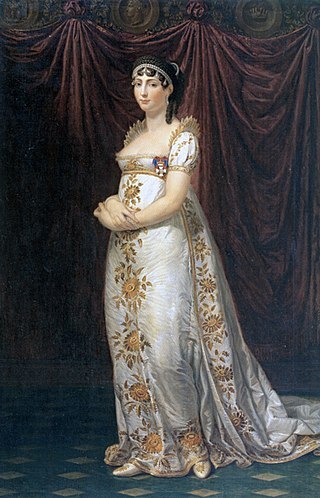

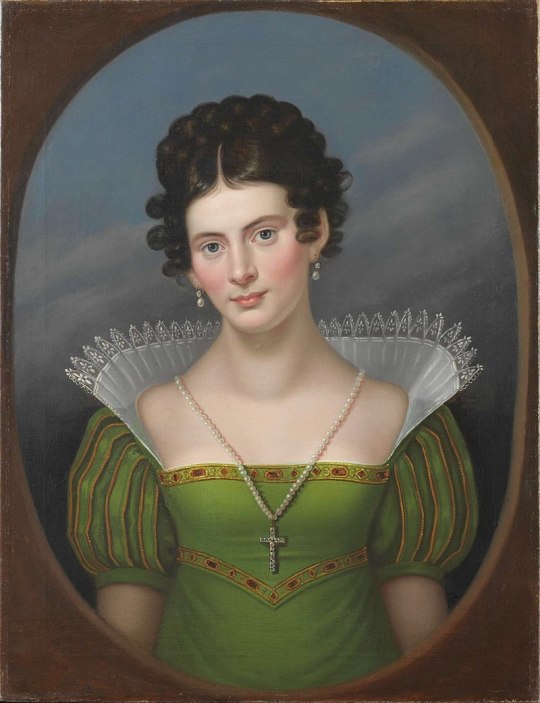



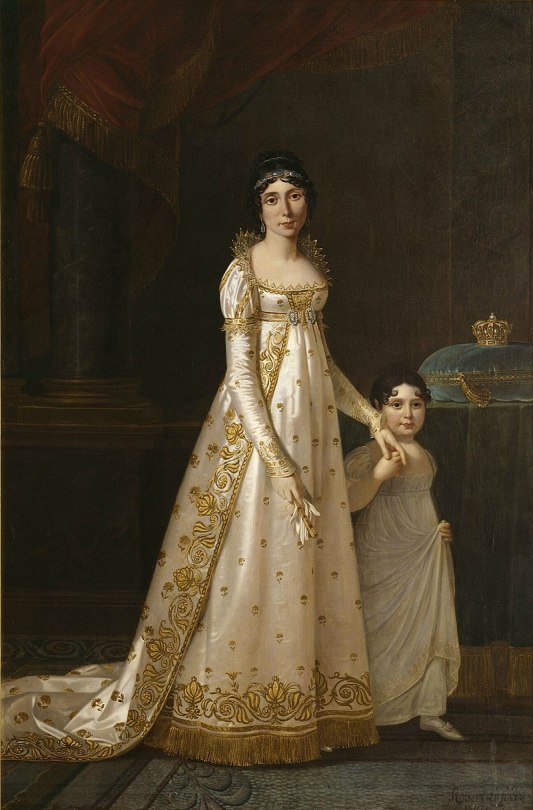

Cherusque (collar) or cherusse: Lace border on neck of women’s decollete gowns or starched lace collarettes of court costume. Directoire and First Empire (1790-1815 CE)
Josephine, Queen of Italy by Andrea Appiani
Karoline Königin von Bayern
Princess Augusta of Bavaria, 1807
The Honourable Mrs. Graham by Thomas Gainsborough (18th century)
Portrait of Dorothee van Herzselle by Caroline Bardua
Elizaveta, wife of Tsar Alexander I by Mosnier
Portrait of Princess Karoline Friederike Wilhemine von Baden (ca 1817) by the circle of Johann Christian von Mannlich
Joséphine de Beauharnais by Henri-François Riesener
Julie Clary, Queen of Naples, with her daughter Zenaide Bonaparte
Maria Sukhovo-Kobylina by C.F.Muller, 1814
#fashion#empire fashion#18th century#18th century fashion#19th century#19th century fashion#regency#regency fashion#cherusque#court dress#i love these#ruffs#medici collar
327 notes
·
View notes
Photo

Caroline Murat and her daughter Letizia, who accompanied her mother on the trip to Munich in 1805.
***
@joachimnapoleon, because she's cool like that, has dug up the letters that Caroline Murat sent to her (at the time) BFF Hortense de Beauharnais in Paris. As the letters were published in a French paper, and as I'm very unsure about French copyright, I do not want to translate them in full. But I hope it will be okay to quote one passage from it, as I think this might illustrate quite nicely all the misunderstandings and misconceptions existing between the »startup« Imperial court of the Bonaparte family and the small German "ancient" courts.
Caroline describes a visit to Electress Karoline, in presence of Caroline’s two ladies-in-waiting Madame La Grange and Madame Lambert. She had arrived in Munich on December 20th after a rather desastrous 3-days-journey that included a road accident. She wished to be lodged not in the electoral residence but in her own palace, and as she had not brought many servants (apparently, she and Murat had some financial problems at the time), she was waited upon by servants of the electoral family.
I have already written a little about Electress Karoline's first impressions of Empress Josephine here. So, now for Caroline’s impressions of the electress:
Munich, December 24, 1805 [if this isn’t a mistake in the publication, then apparently she already uses the old calendar that Napoleon will only officially reintroduce on January 1st]
[…] The Court is extremely boring. The Elector is a very good man, in the style of the Elector Archchancellor [Dalberg, who had been in Paris for the Sacre], except that he is not so witty.
I received yesterday from noon till six o'clock the foreign ministers, their wives, Prince Hohenzollern, one hundred and fifty ladies of the town, the whole household of the Elector and all the gentlemen of the town, and at the end the Electress, who saw Letitia, whom she found charming. I have done so many reverences that I am in bed with a dreadful ache.
The day before yesterday I went to the theatre, where it was colder than at the coronation; I was afraid it would hurt me.
When we go to the Elector's, a table is brought in, and Princess Augusta sits down and makes tea for everyone. Don't fancy the Court too high; they are all like good bourgeois. Nothing is funnier than to see the Elector making conversation with the Empress's maitre d`hotel. […]
Madame Beauharnois makes little of an effect. Madame Lambert makes no effect at all; as she only knows how to be silly and as I do not allow her to be silly, she is nothing. Madame La Grange makes an extraordinary effect; the elector always talks about her, because he knew her father and her whole family very well. Monsieur Daligre, though a fool, also makes an impression, because of his name and his fortune; the elector has often dined at his father's house and knows all his family well. If you come to this country, bring people who have a name, because they do not see the others, I will give you an example.
Yesterday, everyone was wondering what Mrs Lambert was, who her father was, who her husband was... So the electress approached her and said that she was very happy to return to her what her parents had done for the elector in Paris and that her name was not unknown to her, because she had heard a lot about the La Grange family; I then saw Mme Lambert blush, very embarrassed; I stepped forward and told her that she had been mistaken and that this woman was called Lambert. Then she wanted to know what she was; the questions embarrassed me, and I answered that she was the wife of one of our principal inspectors of reviews and that she had a very considerable fortune. Then her glances fell more slowly on her, and she told her that she was well pleased to make her acquaintance. While chatting with another lady, I observed Mme Lambert, who was in conversation with the electress, and I was annoyed to see that she always had an air of embarrassment and of a little girl. I am telling you all this nonsense to make you aware of what is liked here.
Except that I don’t think she really understood »what was liked« at the Bavarian court at all. Maybe I’m reading too much into this, but I think her own expectations really got in the way. What she writes seems to me like an amazing mixture of condescension - "Don't imagine too much, they live like good citizens here, the princess personally makes tea for everyone!", disappointment at not making enough of an impression (why would she even try to achieve that?), and the tacit assumption of not being taken seriously by her hosts. She immediately assumes that the electoral family occupies themselves with some of her companions more than with others because those have »a name«. Whereas Max Joseph - remember, this is the guy who walked around his capital on foot and who, in his palace, strangers liked to mistake for one of his servants - just immediately pounced on anyone whose name reminded him of his youth in Paris.
As for the scene with Madame Lambert, it's actually the Bavarian Karoline who makes a mistake and confuses the two ladies-in-waiting. Which Caroline Murat seems to think is some kind of ruse so she has an excuse to inquire about Madame Lambert's family background? I think Karoline really did address the wrong lady by mistake; she is twenty years younger than her husband, to my knowledge has never been to Paris, and probably only knows the names from Max Josef's nostalgic descriptions. She is presumably at least as embarrassed as poor Madame Lambert. Especially as she apparently continues to talk to the lady she has mistakenly addressed for quite a while, observed by Caroline Murat, despite the fact that Caroline knew nothing more to tell about her lady-in-waiting than that her husband has a pile of money.
So, plenty of misunderstandings. Caroline Murat has come to Munich to see a »real« court - and what she gets is tea served by the elector’s daughter. At the same time, she expected to meet with rejection and secret contempt, and now saw these in incidents that in themselves may have been quite harmless.
The author of the article, Paul Le Brethon, juxtaposes these letters from 1805 with a few lines from another letter written from Munich by Caroline, on her way to pick up Napoleon's new Empress Marie Louise, in March 1810 to her husband Joachim Murat:
My friend, I always feel very comfortable with the King and Queen of Bavaria; they enjoy a calm and perfect happiness in their home; their young family is very interesting [they had five daughters at the time, among them twice twins]; these children remind me of my own, and my eyes are filled with tears every time they look at them.
I think by then, Caroline had understood the difference.
#caroline murat#joachim murat#max joseph#karoline von bayern#auguste von bayern#eugene's marriage#munich 1805#munich residence#napoleon
17 notes
·
View notes